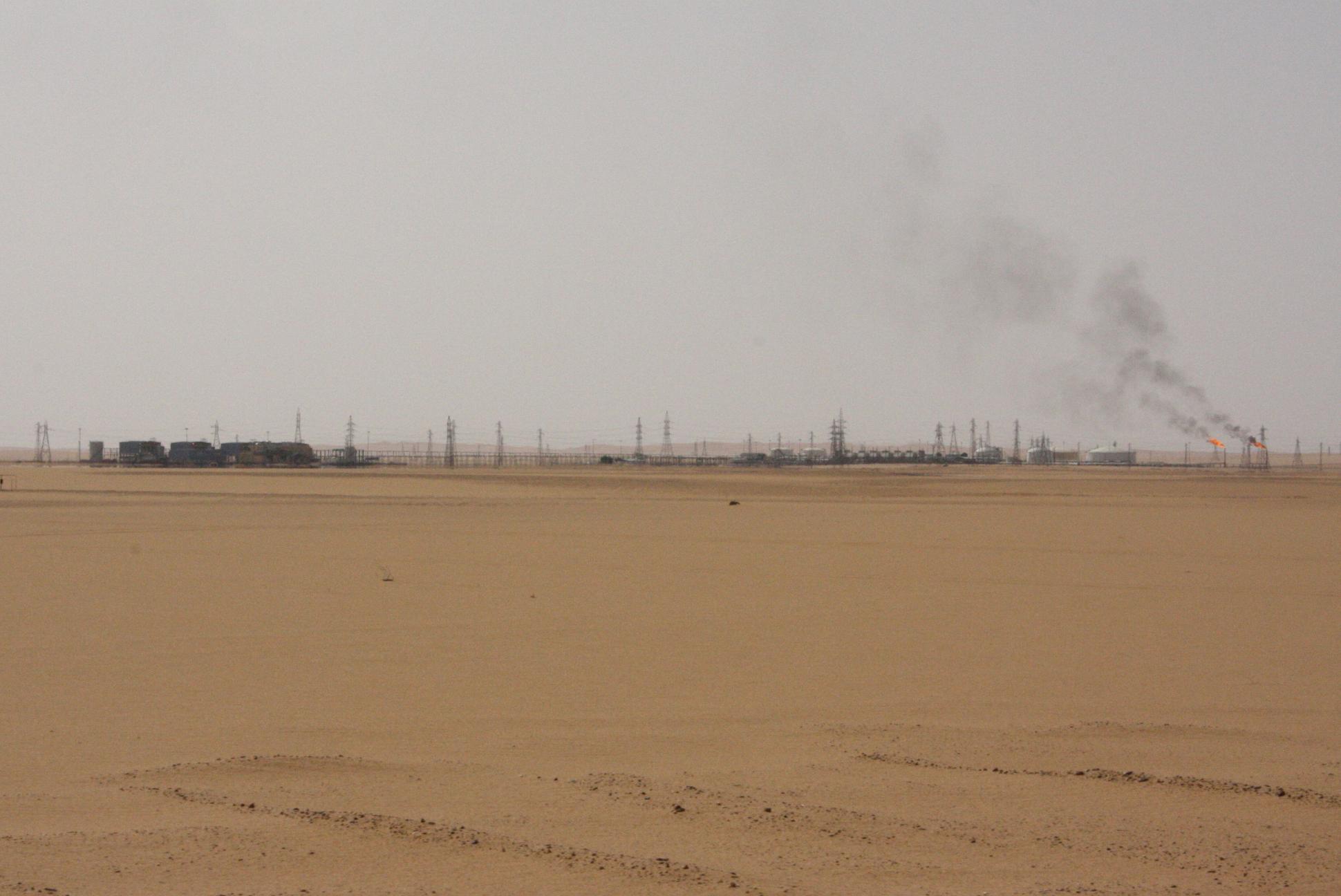
2024-08-26 15:32
Core capital goods orders fall 0.1% in July Core capital goods shipments decrease 0.4% Durable goods orders increase 9.9% WASHINGTON, Aug 26 (Reuters) - New orders for key U.S.-manufactured capital goods unexpectedly fell in July and data for the prior month was revised lower, suggesting a loss of momentum in business spending on equipment that extended into the early part of the third quarter. The report from the Commerce Department on Monday also indicated that the manufacturing sector continued to tread water amid higher interest rates. While orders for long-lasting manufactured goods rebounded sharply last month, aircraft accounted for the increase. Still, the pace of growth in business equipment investment is likely sufficient to sustain the economic expansion. "The economy hasn't hit the skids yet," said Christopher Rupkey, chief economist at FWDBONDS. "Business investment in long-lived core capital goods orders has slowed somewhat at the start of the third quarter, but new orders are miles away from indicating an economic recession for the broader economy." Non-defense capital goods orders excluding aircraft, a closely watched proxy for business spending plans, dipped 0.1% last month after a downwardly revised 0.5% increase in June, the Commerce Department's Census Bureau said. Economists polled by Reuters had forecast these so-called core capital goods orders would be unchanged after a previously reported 0.9% jump in June. Core capital goods orders rose 0.5% year-on-year in July. Machinery orders were unchanged in July, while those for computers and electronic products dropped 0.7%. Orders for electrical equipment, appliances and components fell 0.4%. There were also decreases in orders for primary metals. But orders for fabricated metal products rose 0.2%. Core capital goods shipments fell 0.4% after being unchanged in June. Non-defense capital goods orders rebounded 41.9%. They dropped 22.9% in June. Shipments of these goods rose 4.7% after increasing 6.1% in June. Shipments go into the calculation of the business spending on equipment component in the gross domestic product report. Business investment in equipment notched double-digit growth in the second quarter, with spending on goods largely holding up despite 525 basis points worth of interest rate hikes from the Federal Reserve in 2022 and 2023. It contributed to the economy's 2.8% annualized growth pace in the April-June quarter. After accounting for inflation based on the producer price data, economists estimated that shipments were running below their second-quarter average. With the Institute for Supply Management as well as the regional Fed manufacturing surveys still pointing to weak orders, a contraction in business spending on equipment is a possibility, economists said. "The upshot is that equipment investment is currently on track to post a modest 1.2% annualized gain in the third quarter, with overall GDP growth at 1.8%," said Paul Ashworth, chief North America economist at Capital Economics. Stocks on Wall Street were trading mostly lower. The dollar was flat against a basket of currencies. U.S. Treasury yields fell. AIRCRAFT ORDERS SURGE The U.S. central bank has maintained its benchmark overnight interest rate in the current 5.25%-5.50% range for more than a year. Fed Chair Jerome Powell last Friday signaled rate cuts were imminent amid concerns over labor market weakness. Financial markets expect the Fed to kick off its easing cycle next month with a 25-basis-point rate reduction, though a half-percentage point cut cannot be ruled out. "We suspect a rebound in capital expenditures is coming as the Federal Reserve begins reducing its target range for the federal funds rate, but it will take some time for the accommodation of lower interest rates to filter through to the real economy," said Nicole Cervi, an economist at Wells Fargo. "Today's data confirm the ongoing trend that manufacturers are largely standing idle until looser policy comes to fruition and supports broad-based order demand." Orders for durable goods, items ranging from toasters to aircraft meant to last three years or more, surged 9.9% in July. That was the most in four years and followed a revised 6.9% drop in the prior month. Durable goods orders were previously reported to have declined 6.7% in June. They were boosted last month by a 34.8% rebound in transportation orders after tumbling 20.6% in June. That reflected a 12.9% jump in defense aircraft orders. Motor vehicle orders fell 2.6%. The Census Bureau did not provide a month-to-month percent change in civilian aircraft orders and parts because the denominator had a negative value. Boeing (BA.N) , opens new tab reported on its website that it had received 72 orders for aircraft last month, sharply up from 14 in June. Cancellations are, however, rising as the world's largest aerospace company deals with a multitude of problems, including safety issues. "As a result of Boeing's recent woes and also partly because the biennial Paris airshow took a break this year, aircraft cancellations outpaced new orders in June, with net new orders falling to -$4.2 billion last month," Ashworth of Capital Economics said. "Commercial aircraft net orders rebounded to $23.4 billion in July, however, as buyers made up for lost time at the Farnborough airshow, also held on alternate years." Sign up here. https://www.reuters.com/markets/us/us-core-capital-goods-orders-dip-july-2024-08-26/

2024-08-26 12:56
No confirmation from recognised government or NOC Waha Oil says plans to reduce output gradually No orders to reduce output yet, two sources tell Reuters Tensions over central bank, bank says suspending operations Force majeure declared at Sharara earlier citing protests BENGHAZI, Aug 26 (Reuters) - The government in eastern Libya announced on Monday that all oilfields would be closed down and production and exports halted, while there was no word from the country's internationally recognised government in Tripoli. The National Oil Corp (NOC), which controls the country's oil resources, also provided no confirmation. NOC subsidiary Waha Oil Company, however, announced it planned to gradually reduce output and warned of a complete halt to production citing "protests and pressures". Waha, which operates a joint venture with TotalEnergies (TTEF.PA) , opens new tab and ConocoPhillips (COP.N) , opens new tab, has a production capacity of about 300,000 barrels per day (bpd) which is exported through the eastern port of Es Sider. It operates five main fields in the southeast including Waha which produces more than 100,000 bpd as well as Gallo, Al-Fargh, Al-Samah and Al-Dhahra. Most of Libya's oilfields are in the east, which is under the control of Khalifa Haftar who leads the Libyan National Army (LNA). The Benghazi government did not specify for how long the oilfields could be closed. Two engineers at Messla and Abu Attifel told Reuters on Monday that production was continuing and there had been no orders to halt output. POWER STRUGGLE Libyan factions are locked in a power struggle over control of the central bank and the country's oil revenue. The latest round of tensions emerged after efforts by political factions to oust the Central Bank of Libya (CBL) head Sadiq al-Kabir, with rival armed factions mobilising on each side. The Tripoli-based CBL said on Monday that it suspended its services at home and abroad "due to exceptional disturbance". The central bank is the only internationally recognised depository for Libyan oil revenue, which provide vital economic income for the country. "The Central Bank of Libya hopes that its ongoing efforts in cooperation with all relevant authorities will allow it to resume its normal activity without further delay," it said in a statement. It temporarily shut down all operations last week after a senior bank official was kidnapped but resumed operations the next day after the official was released. A major oil producer, Libya has had little stability since a 2011 NATO-backed uprising. It split in 2014 with eastern and western factions that eventually drew in Russian and Turkish backing. The NOC declared force majeure earlier this month at one of the country's largest oilfields, Sharara, located in Libya's southwest with a capacity of 300,000 bpd, due to protests. Libya's oil production before Sharara's closure stood at about 1.2 million bpd. El Feel in southwestern Libya would be the only functioning oilfield, with a capacity of 130,000 bpd, if production is halted in the east. Sign up here. https://www.reuters.com/world/africa/libyas-eastern-based-government-close-all-oilfields-2024-08-26/

2024-08-26 12:44
SINGAPORE, Aug 26 (Reuters) - China's largest oil and gas company PetroChina's (601857.SS) , opens new tab, first-half net income hit a new high, up 3.9% compared with a year ago, the company said on Monday, as higher oil and gas prices outweighed the impact of reduced refining profits. Net income was 88.61 billion yuan ($12.44 billion) and total revenue was up 5% at 1.554 trillion yuan during the period, according to a filing with the Hong Kong Stock Exchange. China's leading refiner Sinopec earlier posted a 2.6% rise in net interim profit of $5.2 billion, bolstered by record oil and gas output although sluggish fuel and petrochemicals demand dragged. Chinese demand for transportation fuel diesel has slumped because of a prolonged property crisis and the substitution of cheaper natural gas as truck fuel, while growth in gasoline use has been capped by the rise of new-energy vehicles. PetroChina, China's second-largest refiner, posted a 3% growth in crude throughput for the first half at 693.3 million barrels, or 3.81 million bpd. The growth eased from first quarter's 8.2%, suggesting a weaker second quarter. Its total sales volume of gasoline, kerosene and diesel for the period dropped 2% at 79.05 million tons, with diesel leading the fall, down 5.6%, and gasoline fell 2.7%. Sales of aviation fuel expanded 16.4%, however, following recovery in outbound travel and the group's natural gas sales grew 12.9% on the year to 147.2 billion cubic meters. Domestic natural gas output rose 2.9% at 2,486.8 billion cubic feet, while overseas production gained 2.5% at 97.4 billion cubic feet. PetroChina's total crude oil output rose 0.1% on the year to 474.8 million barrels, or 2.61 million barrels per day (bpd). Its domestic output grew 0.1% to 392.8 million barrels and production outside China was unchanged at 82 million barrels. The results were published after the market close. PetroChina's Hong Kong listed shares closed up 1.6% on Monday and have grown 33% so far this year, outperforming the Hang Seng index (.HSI) , opens new tab which has risen 4.4%. (metric ton = 7.3 barrels for crude oil conversion) ($1 = 7.1209 Chinese yuan renminbi) Sign up here. https://www.reuters.com/world/china/petrochina-posts-record-interim-profit-fuel-sales-decline-2024-08-26/

2024-08-26 12:33
HOUSTON, Aug 26 (Reuters) - Exxon Mobil (XOM.N) , opens new tab said on Monday it expects crude demand to stay above 100 million barrels per day (bpd) through 2050, similar to today's levels, a forecast 25% higher than top European rival BP (BP.L) , opens new tab. The stronger demand , opens new tab projected by the largest U.S. oil company in its latest global oil outlook underpins Exxon's production growth plans, the most ambitious among Western oil majors. It did not have a 2050 demand figure in its previous outlook released in 2023 , opens new tab. The company also painted a more somber view on global carbon emissions reductions than BP. Advancements in technology will allow for emissions reductions after 2029, compared to the middle of this decade according to BP. Exxon plans to pump 4.3 million barrels of oil and gas per day this year, 30% more than U.S. top rival Chevron's (CVX.N) , opens new tab current output. BP is cutting production to about 2 million barrels per day by 2030. "Oil and gas demand have a very, very long runway and will continue to grow over the next few years," Exxon Economics, Energy and Strategic Planning Director Chris Birdsall told Reuters. Exxon estimates electric vehicles will not significantly alter long-term global oil demand, as the world's population is expected to increase from 8 billion today to nearly 10 billion in 2050, adding to demand for energy. If every new car sold in the world in 2035 were electric, crude oil demand would still be 85 million bpd, the same it was in 2010, it said. BP projects oil consumption will peak in 2025 and decline to 75 million bpd in 2050. The estimates are more than triple the 24 million bpd of crude the International Energy Agency (IEA) says would allow the world to reach net-zero emissions by 2050. Exxon projects 67% of the global energy mix in 2050 will be supplied by oil, natural gas and coal, down from 68% last year. The company said more investments in oil than are currently anticipated will be necessary as the world transitions to unconventional resources. Wells in these geological formations, such as U.S. shale, have a shorter production lifespan and exhibit a more pronounced natural decline, it said. Exxon projects that without new investments, output would decrease by about 15% per year, a steeper decline compared to IEA's 2018 estimates of about 8% per year. This rate of decline could cause oil prices to quintuple, with global supply plummeting to 30 million bpd as early as 2030, according to Birdsall. "Global oil and natural gas supplies would virtually disappear without continued investments," Birdsall said. "The biggest reason for the change is the shift to more short-cycle unconventional assets." Sign up here. https://www.reuters.com/business/energy/exxon-forecasts-2050-oil-demand-match-todays-25-above-bp-estimate-2024-08-26/

2024-08-26 12:26
MOSCOW, Aug 26 (Reuters) - Russia said on Monday it had conducted a massive strike on Ukraine which it said had disrupted the electricity supply and the transport by rail of arms and ammunition to the front line. Ukrainian officials said earlier on Monday that Russia had launched more than 100 missiles and around 100 attack drones at Ukraine during the morning rush hour, killing at least five people and striking energy facilities nationwide. Russia's Defence Ministry said in a statement it had fired missiles from the air and sea and that it had struck electricity substations in nine Ukrainian regions and gas compressor stations in three regions. "This morning the armed forces of the Russian Federation launched a massive strike with long-range air- and sea-based precision weapons, and with operational and tactical aviation and unmanned aerial vehicles against critical energy infrastructure facilities supporting the work of Ukraine's military-industrial complex," the ministry said. In an apparent reference to F-16 jets supplied by the West, it said Russia had also struck storage facilities holding aircraft ammunition transferred to Kyiv by Western countries at two airfields. "All designated targets were hit, resulting in disruption to the electricity supply and to the transport - by rail - of weapons and ammunition to the line of contact," the statement said. Sign up here. https://www.reuters.com/world/europe/russia-says-it-disrupted-ukraines-power-network-arms-supplies-with-massive-2024-08-26/

2024-08-26 12:09
STAVANGER, Norway, Aug 26 (Reuters) - The future of Russian gas transit through Ukraine remains a key uncertainty for European gas prices, even as the continent heads into the winter with full storages, the CEO of TotelEnergies (TTEF.PA) , opens new tab told Reuters on Monday. A transit agreement to deliver Russian gas to Europe via Ukraine, which last year still totalled 15 billion cubic metres (bcm) out of total EU gas consumption of 295 bcm, is due to expire at the end of the year. Ukraine has said it will not extend the deal. There is also some concern that flows could stop prematurely amid fighting in the Kursk region of Russia, where the gas transit point into Ukraine, Sudzha, is located. "One of the main factors is about this transit for Ukraine because even if the storage are full, I'm not sure we are fully covered if this is interrupted," Patrick Pouyanne said in an interview on the sidelines of an energy conference in Norway. European gas storage levels were last seen 91.2% full, having hit a Nov. 1 target two months early, Gas Infrastructure Europe data showed. The gas market in Europe will continue to be exposed to volatility as there is not much new supply to be added, Pouyanne added, highlighting delays to new liquefied natural gas (LNG) projects like Golden Pass in the United States. "So we are still in a phase where we don't have much margin on the supply for energy," he added. This situation was likely to prevail until 2027, the CEO said. The benchmark front-month contract at the Dutch TTF hub traded at 37.03 euros per megawatt hour (MWh), according to LSEG data. The price had risen above 40 euros to its highest since December earlier this month over fears the transit could stop amid the fighting in Kursk. Sign up here. https://www.reuters.com/business/energy/europe-gas-prices-vulnerable-ukraine-transit-stop-says-totalenergies-ceo-2024-08-26/
